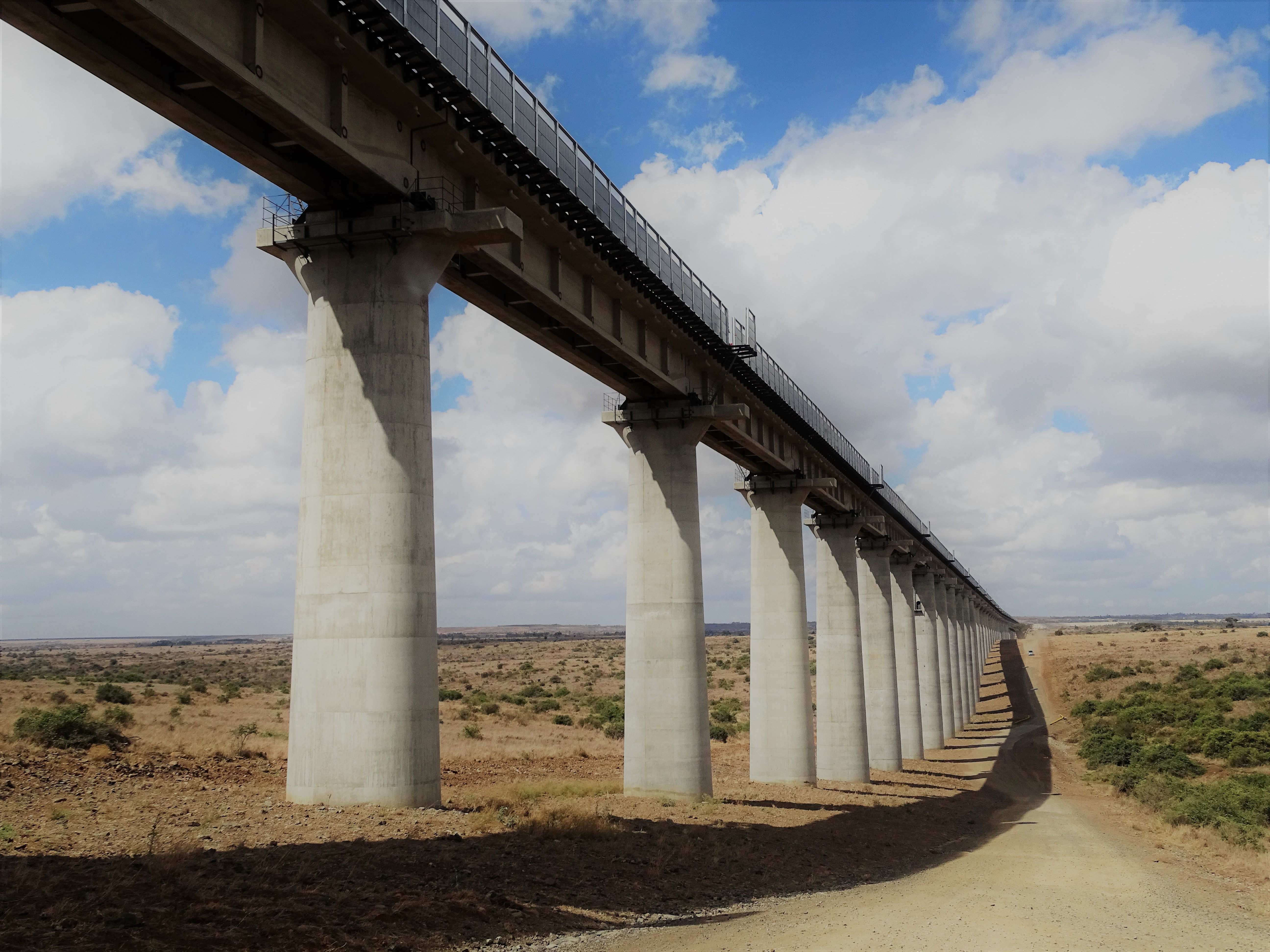
Environmental degradation from transportation infrastructure: the case of Kenya’s Standard Gauge Railway
As many nations look towards large-scale infrastructure investment as a catalyst for economic growth, a group of scientists from the Development Corridors Partnership (DCP) warn about the unwelcome environmental degradation that can take place if transport infrastructure such as railways and roads are not well planned for environmental sustainability.
In a new paper published in the PlosOne journal, DCP scientists use the case of Kenya’s Standard Gauge Railway (SGR) to illustrate the environmental ramifications that need to be considered and addressed in the construction and operation of linear infrastructure projects, citing tangible increases in soil erosion, land degradation, flooding, sedimentation of water bodies, habitat destruction, and other environmental impacts of the SGR construction.
Categories of environmental impact
The DCP scientists identify three categories of environmental impacts resulting from SGR construction:
- Ecosystem degradation – Arising from disturbance, pollution and contamination of soil, water and air, and disruption of natural processes
- Ecosystem fragmentation – Loss of ecosystem integrity through breaking up of large areas of habitat into smaller, more isolated patches
- Ecosystem destruction – The loss of habitat area through the construction and physical presence of transport infrastructure
The main environmental impact observed from the SGR is ecosystem degradation, with ecosystem destruction being minimal in comparison.
Recommendations for improvement
Importantly, the paper also sets out recommendations to integrate environmental sustainability into linear infrastructure planning at all levels and thereby help mitigate and minimize environmental degradation from transport infrastructure. Foremost among these recommendations is the need to carry out more holistic and quantitative assessments of the environmental impacts of transportation infrastructure, with a special focus on extensively engaging and consulting key stakeholders within the design and implementation phases of the project.
Lead author and DCP Post-Doctoral Researcher Dr Tobias Nyumba says, ‘’Development corridors need not prioritise economic benefits alone, but should also account for the costs to the social and ecological systems that underpin human needs, desires and aspirations. Therefore, the various stakeholders play a central role, regardless of the nature of costs and benefits they are likely to accrue from the development projects.”
The study acknowledges that the go-ahead for the SGR was given after the completion of two Environmental and Social Impact Assessments (ESIAs), but the scientists question the efficacy in implementation of the recommendations within these ESIAs, given the widespread environmental degradation observed from construction.
Therefore, further research is also necessary, first to quantify ecological impacts of transport infrastructure projects, and second to develop practical mitigation measures that can be readily applied to those projects (see here for another recent DCP publication, that sets out four steps for projects to become nature-positive).
Linear infrastructure also needs to be planned to be resilient to future climate change, especially increased incidence of extreme weather events, such as floods and droughts, while accounting for socioeconomic needs such as pastoral communities and their ability to access water for their herds.
Aligning with development and wellbeing goals
Prof. Dan Olago, Co-Investigator of DCP from the Institute for Climate Change and Adaptation, University of Nairobi, says, ‘’Mapping such projects to national development goals, the global Sustainable Development Goals, and the Sendai Framework for Disaster Risk Reduction, among other relevant agreements or protocols, is essential to generate all-inclusive and positive outcomes for society and nature.”
Lucy Waruingi, another DCP Co-Investigator and Executive Director of the African Conservation Centre, adds that, ‘’Africa has no option but to develop, but the future of development in Africa must be directly and closely knit within a framework that optimizes environmental safeguards, for such investments to be sustainable.”
These steps are essential, if a ‘transportation corridor’ is to become a true ‘development corridor’, bringing sustainable development and social wellbeing while minimizing or eliminating environmental damage.
The DCP, working through our Kenyan partners the African Conservation Centre (Nairobi) and the Institute for Climate Change and Adaptation, University of Nairobi (together with other partners in the UK, Tanzania, and China) will continue to engage with the wide range of East African and Chinese development corridors actors, in order to generate timely evidence to support decision-making , striving for wider sustainable development outcomes through infrastructure projects that are well planned and implemented.
